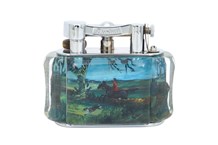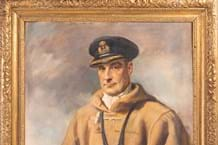An extraordinary general meeting at the ISVA headquarters in London last Tuesday saw 2603 vote for the amalgamation and only 135 against, with three-quarters of those eligible participating in the ballot.
The 7000-strong ISVA had resisted previous moves towards unification, fearing it would lose its identity within the much larger RICS, but ISVA president Ian Loncaster welcomed the decision of his members. “The newly unified body will provide a much better focus for expertise,” he said.
His recommendation, and the evident enthusiasm of ISVA members, is a direct result of a programme of reform within the RICS, whose 100,000 members are currently divided into three unwieldy divisions.
The RICS’s Agenda for Change, which will be formally recommended to members next March, recognises the growing need for specialisation in professional life by replacing the existing divisions with 16 faculties, each with a high degree of autonomy. Fine art and chattels valuers and auctioneers are in a small minority in both ISVA and RICS where commercial and property specialists are dominant, but will have their own faculty within the new RICS. “I think this is particularly good news for the fine arts and chattels specialists,” said Ian Loncaster. “The new structure will provide professionals with a natural home and make it easier for the public to identify the source of their professional qualification.”
From January 1 all ISVA members will become FRICS or ARICS depending on whether they are fellows or associates. Whether specialists will eventually be able to call themselves chartered valuers or chartered auctioneers under the new faculty arrangement is not yet clear but much of the detail of the new look RICS is due to be worked out over the next four months. A detailed package of reforms is to be put before the RICS membership on March 22, 2000.
It seems likely that ISVA examination structure for fine arts and chattels will be absorbed into the new system, though the two entry systems will probably run in tandem for a while.
Overall ISVA members will be widely integrated into the RICS, with more than 100 representatives on various committees. As part of the amalgamation package all administrative staff at ISVA have been guaranteed positions in the new society and the ISVA headquarters in Cadogan Gate, London W8 is to be retained, though it is not yet clear which faculties will be housed there.
ISVA opt for RICS ‘agenda for change’
UK: THE Incorporated Society of Valuers and Auctioneers will be absorbed by the Royal Institution of Chartered Surveyors following an overwhelming vote in favour of the move by ISVA members.




